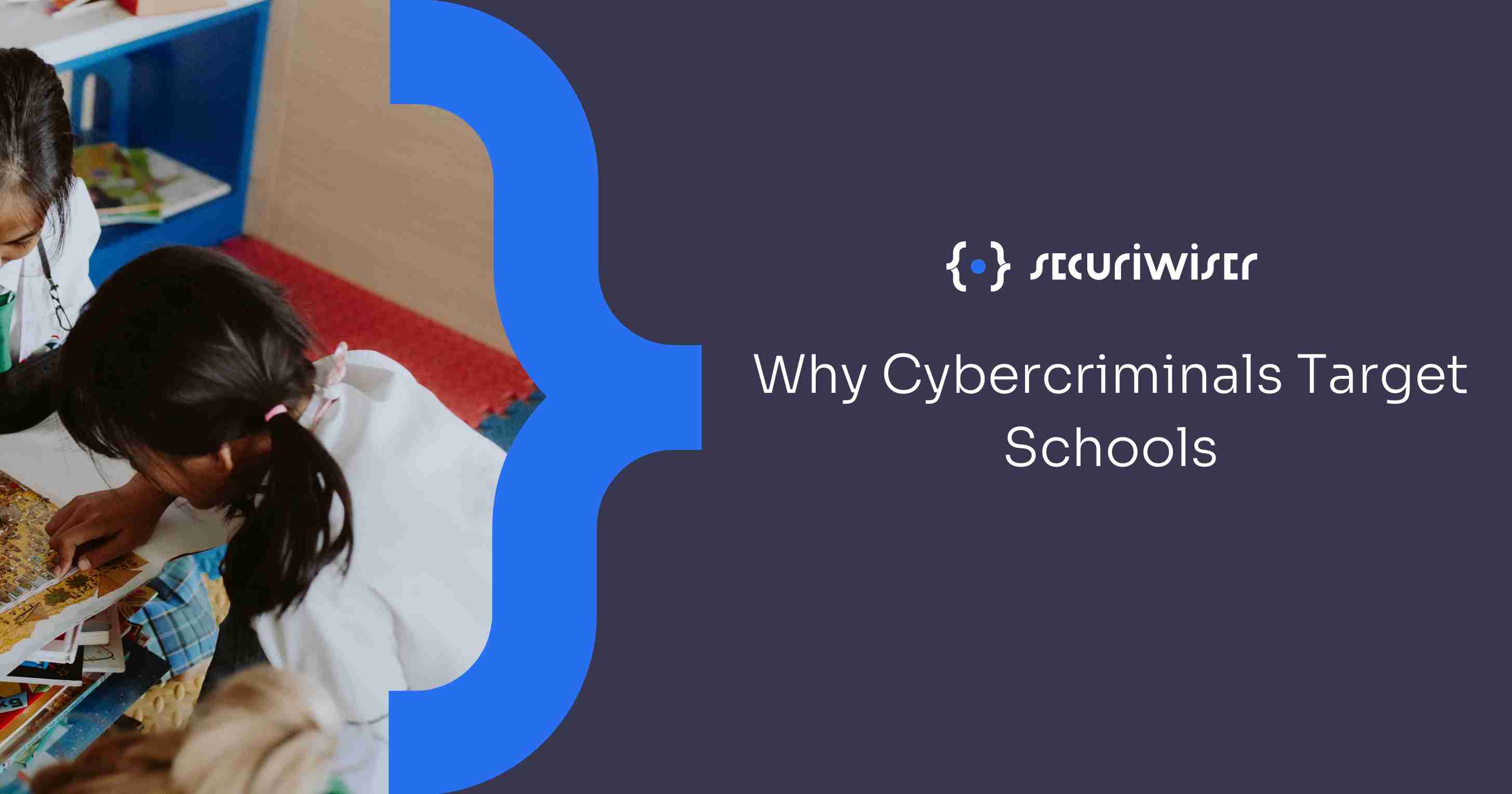Why Cybercriminals Target Schools
Blog / Why Cybercriminals Target Schools
3 MIN READ

The rise of digital learning tools and remote education has further expanded the attack surface, making schools more susceptible to phishing attacks, ransomware, and data breaches. With limited budgets and resources dedicated to cybersecurity, many schools struggle to implement robust defences, leaving them vulnerable to sophisticated cyber threats.
The consequences of such attacks can be severe, including disruption of educational activities, financial loss, and long-term damage to the institution's reputation. But why do cybercriminals target schools? This blog explores the key reasons why schools are appealing targets for cybercriminals and highlights the critical need for enhanced cybersecurity measures in educational institutions.
1. Large Amounts of Personal Data
Schools hold vast amounts of personal data on students, staff, and parents. This data includes names, addresses, phone numbers, social security numbers, and even health records. For cybercriminals, this treasure trove of personal information can be sold on the dark web or used for identity theft. The sheer volume of data stored by schools makes them a goldmine for cybercriminals who can exploit this information for financial gain or malicious activities.
2. Financial Information
In addition to personal data, educational institutions handle extensive financial information, ranging from payment records and tuition fees to staff salaries and vendor contracts. This financial data is incredibly valuable to cybercriminals who can use it to commit fraud, steal funds, or engage in ransomware attacks. Schools often process transactions through less sophisticated systems compared to commercial entities, making them more vulnerable to breaches and financial exploitation.
Cybercriminals can exploit this financial data to commit fraud, steal funds, or disrupt financial operations. Access to such information provides ample opportunities for cybercriminals to monetize their attacks.
3. Perception as Soft Target
Cybercriminals often perceive schools as soft targets due to their limited cybersecurity resources and measures. Unlike large corporations with dedicated IT security teams, many schools operate with under-resourced IT departments, making it easier for attackers to infiltrate their systems. Cybercriminals capitalize on these perceived weaknesses, exploiting vulnerabilities in school networks and systems with relative ease compared to more fortified targets.
4. Under-resourced IT Departments
Many schools lack the financial and human resources necessary to maintain robust cybersecurity defences. IT departments in educational institutions are often overstretched, managing everything from basic tech support to network security with limited budgets. This lack of resources makes it difficult for schools to implement advanced security measures, conduct regular security audits, and respond effectively to cyber threats.
5. Disruption to Educational Processes
Cybercriminals are also motivated by the significant disruption they can cause to educational processes. A successful cyber attack can shut down critical systems, delay exams, and even force schools to close temporarily.
The chaos and uncertainty created by such disruptions can pressure schools to pay ransoms or meet other demands quickly. Cybercriminals exploit this urgency to their advantage, knowing that schools will go to great lengths to restore normalcy for their students and staff.
6. Vulnerability Due to Remote Learning
The shift to remote learning, accelerated by the COVID-19 pandemic, has introduced new vulnerabilities. With students and staff accessing school networks from various locations and using personal devices, the security perimeter has expanded significantly. \ \ Cybercriminals exploit these remote access points, targeting unsecured devices and home networks to infiltrate school systems. The increase in virtual learning tools and platforms also provides more opportunities for cyber attacks, making it essential for schools to enhance their security measures for remote learning environments.
7. Access to Valuable Intellectual Property
Finally, schools maintain a wide range of important documents, including student transcripts, standardized test materials, curriculum plans, and confidential administrative records. These documents are crucial for the functioning of the school and the academic progression of its students.
Cybercriminals can target this information for various malicious purposes, such as altering grades, gaining unauthorized access to exams, or even selling sensitive information. The theft or manipulation of these documents can lead to significant operational and reputational damage for schools, making them an appealing target for cybercriminals.
Conclusion
The growing sophistication of cyber threats and the unique vulnerabilities of educational institutions make schools prime targets for cybercriminals. By understanding the reasons behind these attacks, schools can better prepare and strengthen their cybersecurity defences. Schools must invest in comprehensive cybersecurity measures, educate staff and students on best practices, and stay vigilant against emerging threats to protect their valuable data and ensure the continuity of educational processes.
How secure is
your school?
Blog categories
How secure is
your school?